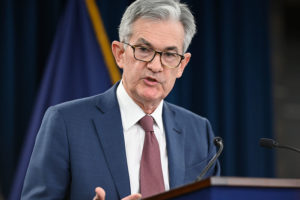Much like the terrorist attacks of September 11, 2001, the coronavirus has revealed an overvalued market to investors. The blame for this overvaluation lies with a Federal Reserve that has so distorted interest rates, the view of risk has become clouded. A few years ago, I wrote:
In End the Fed, Ron Paul writes, “The essence of the Federal Reserve Act was largely unchanged from when it was first hatched years earlier. With a vote by Congress, the government would confer legal legitimacy on a cartel of the largest bankers and permit them to inflate the money supply at will, providing for themselves and the financial system liquidity in times of need, while insulating themselves against the consequences of bad loans and overextension of credit.”
Congress’ Most Tragic Blunder
Paul continues, “Hans Sennholz [Money and Freedom] has called the creation of the Fed ‘the most tragic blunder ever committed by Congress. The day it was passed, old America died and a new era began. A new institution was born that was to cause, or greatly contribute to, the unprecedented economic instability in the decades to come.’…
“In 1912, Ludwig von Mises wrote a book called The Theory of Money and Credit that was widely acclaimed all over Europe. In it he warned that the creation of central banks would worsen and spread business cycles rather than eliminate them.”
The Fed Has a 100% Error Rate
John A. Allison is president and CEO of the Cato Institute and former chairman and CEO of BB&T. During his BB&T tenure, John was the longest-serving CEO of a top-25 financial institution. In The Financial Crisis and the Free Market Cure, John explains that the primary sources of the massive misallocations of resources regarding the recent financial crisis are (1) the Federal Reserve, (2) FDIC, (3) Government housing policy, and (4) the SEC. As John points out, “In 1913, the monetary system of the United States was nationalized. The federal government owns the monetary system. We do not have a private monetary system in the United States.” John Allison continues, “In my career, the Fed has a 100% error rate in predicting and reacting to important economic turns.”
My friend John Allison’s words carry a special urgency today. The Fed has a “100% error rate.” It’s true. Every time the Fed sees a problem, it ladles out more monetary stimulus, driving asset prices upward and exaggerating the next meltdown.
The Fed’s wild responses to the slightest declines in stock market prices have become a real risk for which investors must account.
My family-run investment counsel firm has developed its own strategy for responding to the Federal Reserve’s recent actions. To read about them in detail, click here for the latest monthly client letter written by my son Matt, President and CEO of Richard C. Young & Co., Ltd.
Each month, Matt covers the strategies we employ at Richard C. Young & Co., Ltd. If you would like to be alerted each time a new letter is released, please click here to sign up. The letter is free, even for non-clients.
Originally posted on Young’s World Money Forecast.
If you’re willing to fight for Main Street America, click here to sign up for my free weekly email.





